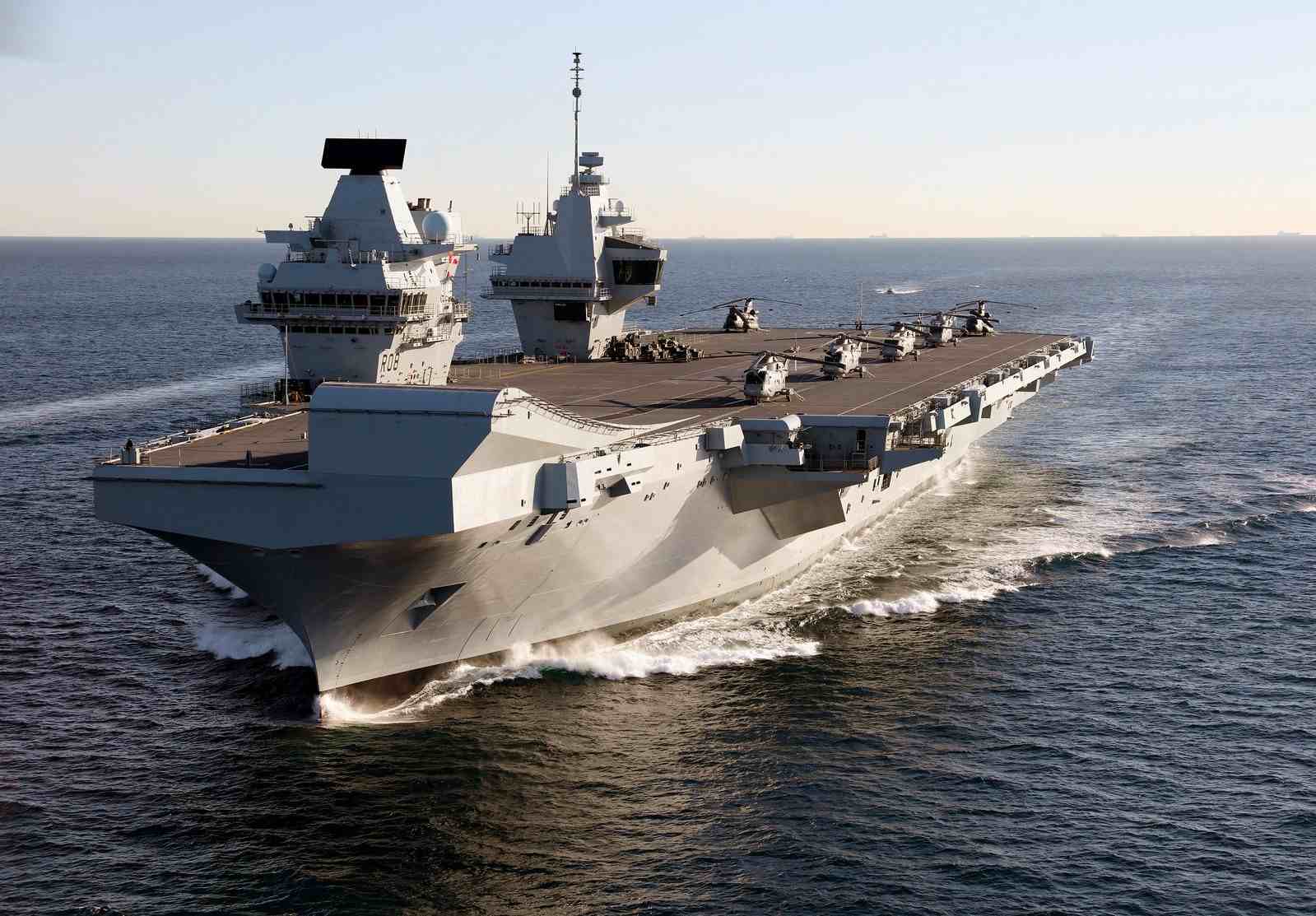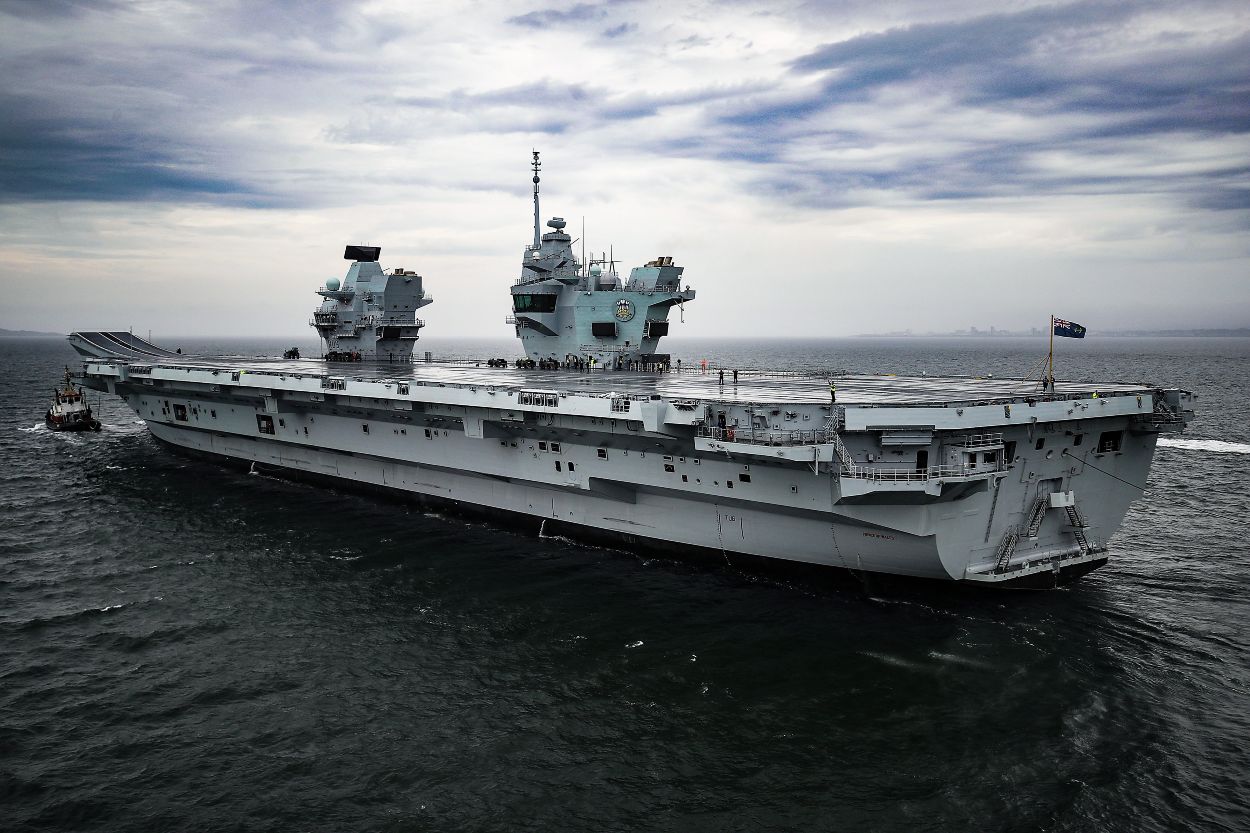The debate on the efficacy and potency of aircraft carriers and submarines has been raging for a while. While both flattops and submerged platforms have pros and cons, the recent wargaming showed that Britain lost its multi-billion-pound aircraft carriers ‘in most wargames.’
The UK’s Royal Navy inducted two aircraft carriers, HMS Queen Elizabeth and HMS Prince of Wales, in 2017 and 2019. Built at a cost of £6.2 billion (US$7.8 billion), the aircraft carriers aim to project the country’s power far beyond its borders.
The use of anti-ship missiles and the new anti-aircraft systems have led many to wonder about the carrier’s possible obsolescence. Wargames have shown that the constant technological evolution has made aircraft carriers vulnerable to modern missiles.
An official familiar with the wargames has been quoted in the media that “the carriers get sunk” in most of the iterations.
China’s long-range ballistic missiles, which have earned the sobriquet “aircraft carrier killers,” have challenged the naval power projection of Western countries, and the UK is no exception.
Royal Navy strategists are seized with the huge progress in the Chinese anti-ship missile arsenal. The missile technology has made it capable of locating and tracking Britain’s naval fleet.

China has also been reviving Cold War-era technology by building large Over the Horizon Radar (OTHR) sites, which can be used to locate the sites of its adversary’s fleet from a great distance. Two types of OTHR can be deployed: a skywave and a surface wave. Both systems were used during the Cold War era but lost their importance to modern-day radars.
The OTHR is set to make a comeback as it can address the range limitations of current radars. OTHRs’ range can extend into thousands of miles as they consist of an extensive array of antennae spread out over an area, with the transmission and receiving equipment placed geographically away from each other.
China’s latest missile in the arsenal is the DF-17, which is equipped with a hypersonic glide vehicle. The missile is fast and long-range, with a high-precision strike capability, leaving enemies with little time to react. The hypersonic glide vehicles have higher maneuverability and lower altitudes, making them harder to track and predict their flight path.
During the wargames, the Royal Navy’s ‘ability to survive’ is ‘stretched to the limit,’ with a scenario eventually arising whereby a carrier would be sunk.
Do Aircraft Carriers Have A Place In Future Warfare?
In July 2024, the UK’s new labor government undertook a comprehensive assessment of defense projects to save money. One of the questions they explored was whether aircraft carriers are necessary for modern warfare.
The Telegraph reported that in a recent meeting between the Ministry of Defence and Treasury officials, the possible decommissioning of at least one of the Navy’s carriers was explored as departments look to remedy ongoing financial problems.
The Royal Navy officials, however, insisted that mothballing the aircraft carrier would not lead to considerable savings. Retiring one aircraft carrier would mean that the Royal Navy could be without one when the lone flattop goes for repair and maintenance. The UK must also have at least one aircraft carrier available for NATO duty.

The situation is further aggravated by the Royal Navy’s financial crunch, which makes it difficult for it to afford new F-35 aircraft to operate from its carriers.
The aircraft carrier needed to be escorted by support vessels, and the ongoing manpower crisis meant that the HMS Prince of Wales was flanked by warships from the Norwegian Navy during its deployment to the Pacific Region.
During the Falkland Wars, the Royal Navy had four aircraft carriers, but this number has been reduced to two. The number of destroyers has also come down from 13 to six. The Navy now has only six frigates from a whopping 51 frigates in 1982. The number of submarines has also decreased from 37 to 10.
The remaining warships are old, overworked, and fast approaching retirement. In the coming years, its aircraft carrier will need escorts from friendly navies.
The Royal Navy’s strength is woefully short in dealing with emerging threats, especially in the Indo-Pacific. With the Chinese Navy’s sojourn increasing close to home, the Royal Navy needs an aggressive plan to get new naval platforms. Over the past month, a Royal Navy frigate monitored a Chinese naval task force twice as it passed through the English Channel and back again.
In comparison, the US has one of the largest numbers of aircraft carriers in the world, at 11. The PLA Navy’s third aircraft carrier, the 80,000-ton Fujian, is undergoing sea trials, and the Indian Navy is also contemplating a third aircraft carrier.
There has also been a school of thought that has been pushing for bigger nuclear-powered aircraft carriers. Nuclear propulsion offers higher and unlimited power to the carriers. The nuclear-powered floating bases are more agile and can be deployed for extended periods.
Small flattops have less potent onboard defense systems than big carriers and are particularly vulnerable to drone swarm attacks. A small aircraft carrier’s peacetime importance is under contention, and its combat role is limited.




